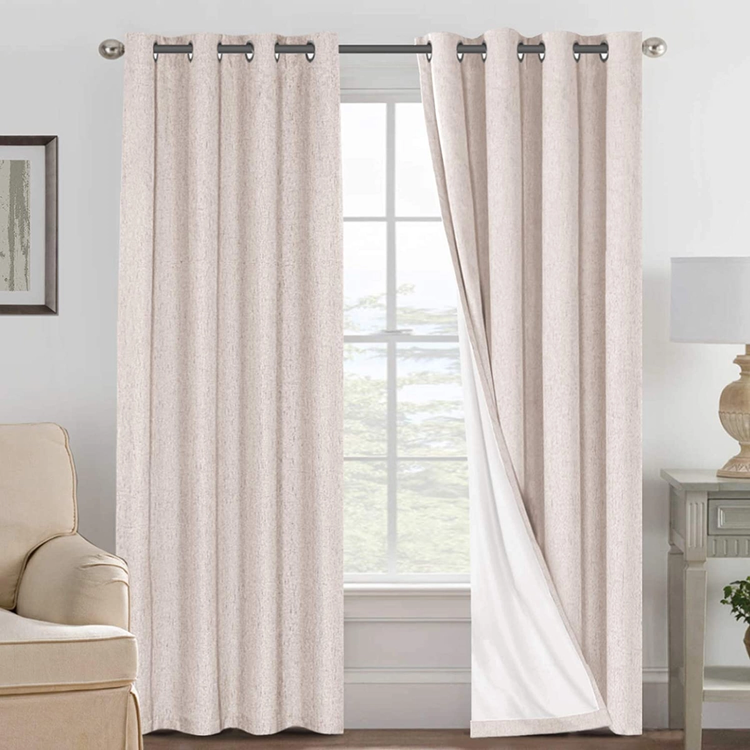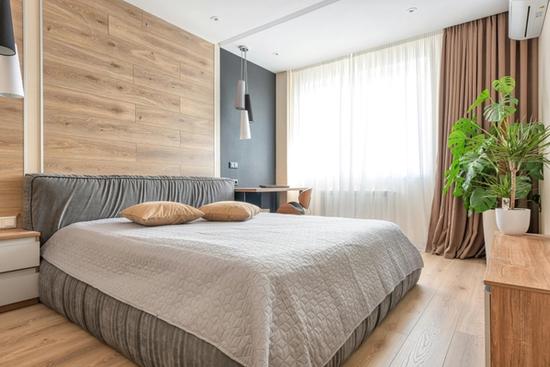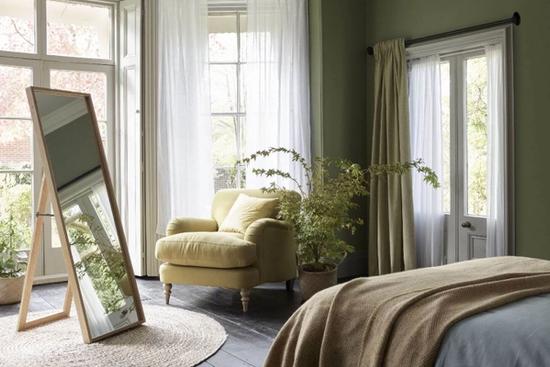3 Ways to Winterize Your Home With Curtains

Heating your home during the winter is a necessity. But on average, Americans spend almost 50 percent of their energy bill on space heating — and most are paying more than they should.
To winterize your home windows and improve energy efficiency, consider hanging curtains to keep cold out.
When it’s cold, the leaks in your windows, doorways or foundation allow heat to escape and cold air to enter. Your space heater or central heater must work twice as hard to warm up your home, wasting you hundreds of dollars each year.
According to the Office of Energy Efficiency and Renewable Energy, drafts account for 10 to 20 percent of your space heating bill — an average of $200 to $400 yearly.
So, by reducing air leaks, sealing your windows, and hanging curtains that block out cold, you can save money and keep your home warm.
3 Ways to Winterize Your Windows
The best way to winterize your windows is to hang curtains. Curtains are the easiest, most cost-efficient way to insulate your home and cover cold windows.
Here are three ways to winterize your home and block cold air from coming through your windows:
- Conduct a home energy audit
- Hang thermal or blackout curtains
- Layer your curtains
1. Conduct a Home Energy Audit
First, you need to identify the areas in your home that aren’t energy efficient. Air leaks around windows, ceilings, floors, doors and fireplaces will work against your heating system by letting heat escape.
You can hire a professional for a comprehensive assessment, but you can also conduct a home energy audit yourself.
To start, walk around your house and carefully examine walls and crevices. Look for gaps or cracks along windows and doors, baseboards, the edge of floorboards and junctures where the wall and ceiling meet.
Assess your windows and doors. See if you can rattle them — any movement is a likely indicator of air leaks.
2. Hang Thermal or Blackout Curtains
After you identify the windows or doors that need additional insulation, you need to hang the right curtains to keep cold out. Thermal or blackout curtains are ideal for cold and drafty windows.
Thermal curtains are thick, heavy curtains that contain a layer of acrylic foam. Thermal curtains are designed to provide additional insulation and prevent air from entering or escaping your window, therefore reducing your energy consumption.
Pro-tip: Thermal curtains can also dampen sounds, so they’re ideal for noisy neighborhoods or quiet rooms.
Read more: Easy DIY Thermal Curtains to Insulate Your Home

Blackout curtains are made with tightly woven fabrics that help to block out sunlight. These curtains have a thin liner on the inside to obstruct light, but they aren’t as effective at sealing drafts compared to thermal curtains.
Thermal and blackout curtains can cost more than regular curtains. If you don’t want to purchase thermal curtains for the entire house, concentrate on drafty windows or rooms where you spend more time.
Learn more: Everything You Need to Know About Energy Efficient Curtains
3. Layer Your Curtains
Replacing all the curtains in your home can be costly and time-consuming. If you’re not up to the task, consider layering your curtains as an alternative. A double layer offers additional protection against cold air.
To hang layered curtains, you’ll need a double curtain rod bracket that allows you to use two curtain rods or a double rod.
Note that layering standard curtains may not work as well as thermal curtains, especially if you live in a frigid climate. We recommend layered curtains for more moderate temperatures or newer build homes without draft issues.

Other Ways to Winterize Your Windows
In addition to hanging curtains for drafty windows, there are a few other ways to insulate your home and stay warm through the winter:
Try a window insulation kit
These do-it-yourself kits include window insulation film to seal off your windows. They’re effective but render your windows immobile — you won’t be able to open the window until you peel off the plastic wrap. You can find these kits at your local hardware store.
Caulk and weatherstrip windows
If thermal or blackout curtains aren’t enough to block air drafts, you can also caulk or weatherstrip your windows for an extra layer of protection. If you caulk the outside, make sure to use an exterior-grade caulk.
Install storm windows
Storm windows retrofit onto your existing windows. They help reduce air movement and heating and cooling costs. Storm windows are costly, but they can also protect your main windows from sunlight, wind and dust exposure.
How to Hang Curtains to Keep Cold Out
It’s essential to hang your winter curtains precisely and correctly. Misaligned and crooked curtains can allow more drafts to enter your home, and improperly installed hardware poses a safety hazard.
If you’re looking for robust and secure hardware for winter curtains, look no further than Kwik-Hang’s no-drill curtain rod brackets, which make hanging or updating curtains a breeze.
Kwik-Hang brackets don’t require nails, screws or any drilling. The patented damage-free design also holds up to 20 pounds, so the brackets are safe for use in homes with pets and children.
Whether you’re hanging heavy thermal drapes or sheer summer curtains, Kwik-Hang’s sturdy curtain rod brackets can weather any season.
Try Kwik-Hang curtain rod brackets today!






